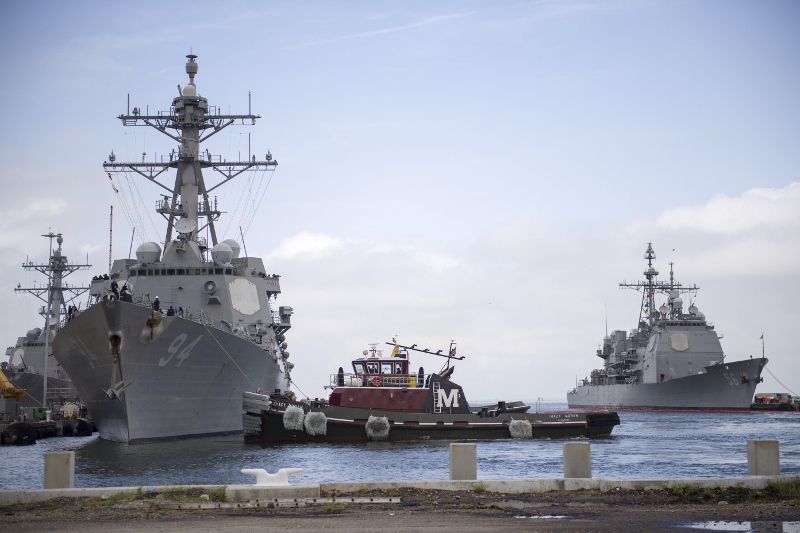Hurricane Florence is on track to be the most powerful storm to strike the Carolinas in 29 years, with tropical storm force winds expected near shore Wednesday.
The Coast Guard declared port condition X-ray for Charleston, S.C., and Virginia ports, with gale force winds expected within 48 hours. Governors in the Carolinas and Virginia declared states of emergency over the weekend, with both National Hurricane Center forecasts and various computer models in unusually close agreement in predicting the strike Thursday into Friday.
“We are planning for a large-scale evacuation,” officials with the South Carolina Emergency Management Division announced on Twitter at 3 p.m. Monday, minutes after Gov. Henry McMaster made the decision to order people to leave low-lying coastal areas
Some 1 million people were under evacuation orders in the coastal Carolinas, as officials in Virginia moved to evacuate areas around Norfolk and Virginia Beach.
As of mid-day Tuesday updates from the National Hurricane Center had the hurricane's potential area of landfall centered around the southeast coast of North Carolina. Storm surges could be 4' to 6' south of Cape Fear, N.C., and 6' to 12' between Cape Fear and Cape Lookout, N.C., the hurricane center warned. Those high surges will affect the Neuse and Pamlico rivers in North Carolina as well.

The tug Tracy Moran returns after assisting the Navy guided missile destroyer James E. Williams from Hampton Roads, Va., ahead of hurricane Florence Sept. 10, 2018. Navy photo/Spc. 2 Justin Wolpert
Shoreside Navy installations set Tropical Cyclone Condition of Readiness Three, preparing for sustained destructive winds of greater than 50 knots expected within 48 hours.
Civilian ports remained open to commercial traffic and all transfer operations continued with the Coast Guard port condition X-ray in effect, but oceangoing vessels and barges of greater than 500 gross tons were advised to make preparations for departure. Vessel operators wishing to remain in port were required to contact the local captain of the port and submit safe mooring plans in writing. The Coast Guard anticipates closing the main channel to Virginia ports at 6 a.m. Wednesday, according to the Virginia Port Authority.
While Florence preoccupies national attention, mariners also had tropical storm Isaac to contend with as it approached the Lesser Antilles islands, with the prospect of achieving hurricane force Thursday. The Coast Guard was to set its port condition X-ray for Puerto Rico and the U.S. Virgin Islands at 8 p.m. Tuesday.
Florence approaches at the end of a summer that has seen record levels of cargo traffic at Atlantic Coast ports from Georgia to Virginia, boosted by the new generation of neo-Panamax containerships and a growing economy.
Before the hurricane, port officials were looking more at the threat of trade war with China if its tariff negotiations with the Trump administration do not go well.
August was the single biggest month ever for container movements at the Port of Charleston, where the annual volume year-to-year has been up 13%.
“Fall is typically a seasonally strong time for our port,” South Carolina Ports Authority president and CEO Jim Newsome said Monday in announcing the milestone. “And while we look forward to continued growth through 2018, we will continue to monitor the potential for tariff negotiations to adversely impact containerized trade if prolonged or not otherwise resolved successfully.”




